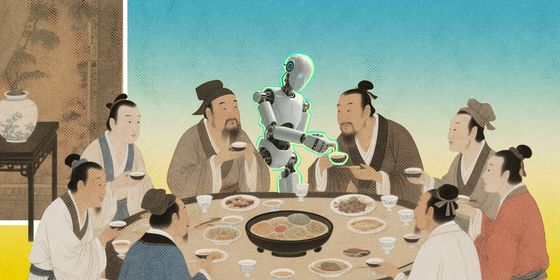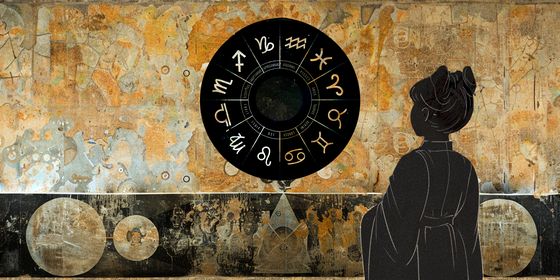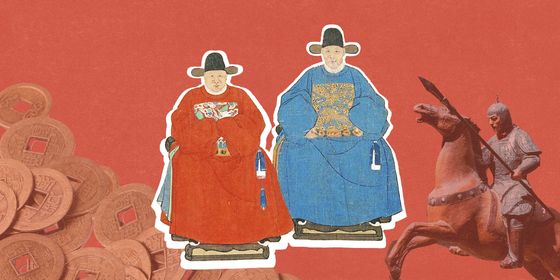From soap made from ground jade to extravagant public bathhouses, learn the ingenious methods ancient Chinese used to stay clean
A hot shower is a common comfort in all but the poorest parts of China these days, but in ancient times, before modern drainage systems and household boilers, things were not so convenient.
The nobility may have had the “luxury” of being able to bathe once a week in their own homes, while some common folk could access vast public bathhouses that became prevalent in the Song dynasty (960 – 1279). But while private bathing among the masses is a relatively modern phenomenon (in the 20th century Mao Zedong is said to have rarely bathed, for example), possible only after indoor plumbing became prevalent in the late 1990s, Chinese dynasties of the past developed their own bathing cultures.
William Feetham, an English stove maker, invented the earliest mechanized shower in 1767, but bathing culture in China can be traced back over 3,000 years to the Shang dynasty (1600 – 1046 BCE). Oracle bone inscriptions containing the characters 沐 (mù, washing hair) and 浴 (yù, washing the body) suggest that even then people paid attention to personal hygiene.
The Rites of Zhou (《周礼》), a work on Zhou dynasty (1046 – 256 BCE) politics and culture mainly compiled during the Spring and Autumn Period (770 – 476 BCE), recorded that “There were bathrooms in the emperor’s bedroom.” In 2017, archeologists in Xi’an, Shaanxi province, excavated three royal bathrooms decorated with ceramic floor and wall tiles, and featuring drainage holes and sewage pipes. Experts date the bathrooms to the Warring States period (475– 221 BCE), and believe they belonged to the palace of the Qin state.
Read more:
- The Bathing Cultures Dividing North and South China
- Why Long Fingernails Were All the Rage in Ancient China
- Soak Up the Decadent Footbath Culture of China’s ‘Foot Capital’
In the Zhou dynasty, bathing was not just for personal hygiene, but also regarded as a social ritual. According to the Book of Rites (《礼记》), a collection of texts mainly published in the Han dynasty (206 – 220 CE) on society and politics of the Zhou era, a filial person should boil hot water for their parents to take a bath with every five days, and help their parents to wash their hair every three days. When visiting another household, it was considered good manners to take a bath provided by the host before enjoying the meal.
In the Han dynasty, bathing became even more important. The government even offered holidays to officials so that they could wash. The historical text The Rites of the Han Court (《汉宫仪》) states: “Every five days, a day off is offered for taking a bath, also known as a ‘bathing holiday.’” This custom remained in later dynasties: In the Tang dynasty (618 – 907), the “bathing holiday” took place once every ten working days.
During the later years of the Han dynasty, an ancient version of shower gel emerged. Known as “bath bean (澡豆),” it was a powdery soap was made from ground beans or peas mixed with spices such as cloves, eaglewood, various flowers, and even powdered jade. Bath bean was a luxury that became fashionable among the upper classes during the Northern and Southern Dynasties (420 – 589) both for cleaning and supposedly to nourish the skin.
The bath bean even birthed a chengyu still used today. In A New Account of the Tales of the World (《世说新语》), a compilation of character sketches and anecdotes from the first to the sixth century, Wang Dun (王敦), son-in-law to Emperor Wu of the Jin dynasty (265 – 420) mistook bath bean for food. After using the bathroom in the palace, a servant presented him with a basin of water and a bowl of bath bean. Instead of using the powder to wash his hands, Wang thanked his servant for the “dried rice,” added water to it, and drank it. The story birthed the chengyu “regard bath bean as rice (澡豆为饭 zǎodòu wéi fàn),” which describes a person’s ignorance about the world and about high society in particular.
Of course, such expensive toiletries were a luxury reserved for the nobility. At the end of each lunar year, the emperor would send his officials bath bean and other toiletries as gifts, while ordinary people mostly still used the simplified bath wash made of pea powder and mung bean or white beans without any additional spices, if they used anything at all.
At the same time, wealthy noble people also built large private bathhouses. In 334, Shi Hu, a king of the Later Zhao, a breakaway state of the later Jin dynasty, built an extravagant bathhouse called the “Burning Dragon Warm Pool (燋龙温池)” at Yecheng, in today’s Hebei province. He cast thousands of dragon-shaped bronze sculptures, each weighing tens of kilos, heated them up, and lowered them down into the pool to warm the water.
In the Tang dynasty, the Emperors Taizong and Xuanzong rebuilt the palace left by the emperors of the Qin (221 – 206 BCE) and Han dynasties in Xi’an. Emperor Xuanzong renamed it the “Huaqing Palace.” In the palace, there was a complex of hot springs known as the “Huaqing Pool (华清池),” which were used as the imperial bathing pool. It became famous as the scene of Emperor Xuanzong’s romance with concubine Yang Yuhuan, recorded and dramatized in the “Song of Everlasting Regret (《长恨歌》)” by the poet Bai Juyi (白居易).
In the Song dynasty, public bathhouses emerged and quickly became an essential part of social life and recreation, affordable to the general public. The famous poet Su Dongpo (苏轼) wrote of the joy of having his back scrubbed in a bathhouse: “A message to the one who is scrubbing my back / Thanks for moving your elbow forth and back.” By the Yuan dynasty (1270 – 1368), public bathhouses were known as “混堂,” literally “mixing hall.” They featured massage services, nail clipping, shaving, and ear cleaning—similar to what modern bathhouses offer today.
Public bathhouses were perhaps most elaborate during the Ming dynasty (1368 – 1644). In Qixiu Leigao (《七修类稿》), scholar Lang Ying wrote that bathhouses in the Wu region, an area around Lake Tai in present day Jiangsu province, had “a pool made of slabbed rock, ceilings of brick, and a huge boiler in the back of the house connected with the bathing pool; a tunnel hidden in the wall is used to lead the hot water into the pool.”
Around this time, public bathhouses also began to realize the importance of sanitation and safety. Some of the safety regulations remain even now. One common warning found outside of both Ming dynasty bathhouses and bathhouses today state: “No drunks allowed in the pool.”













